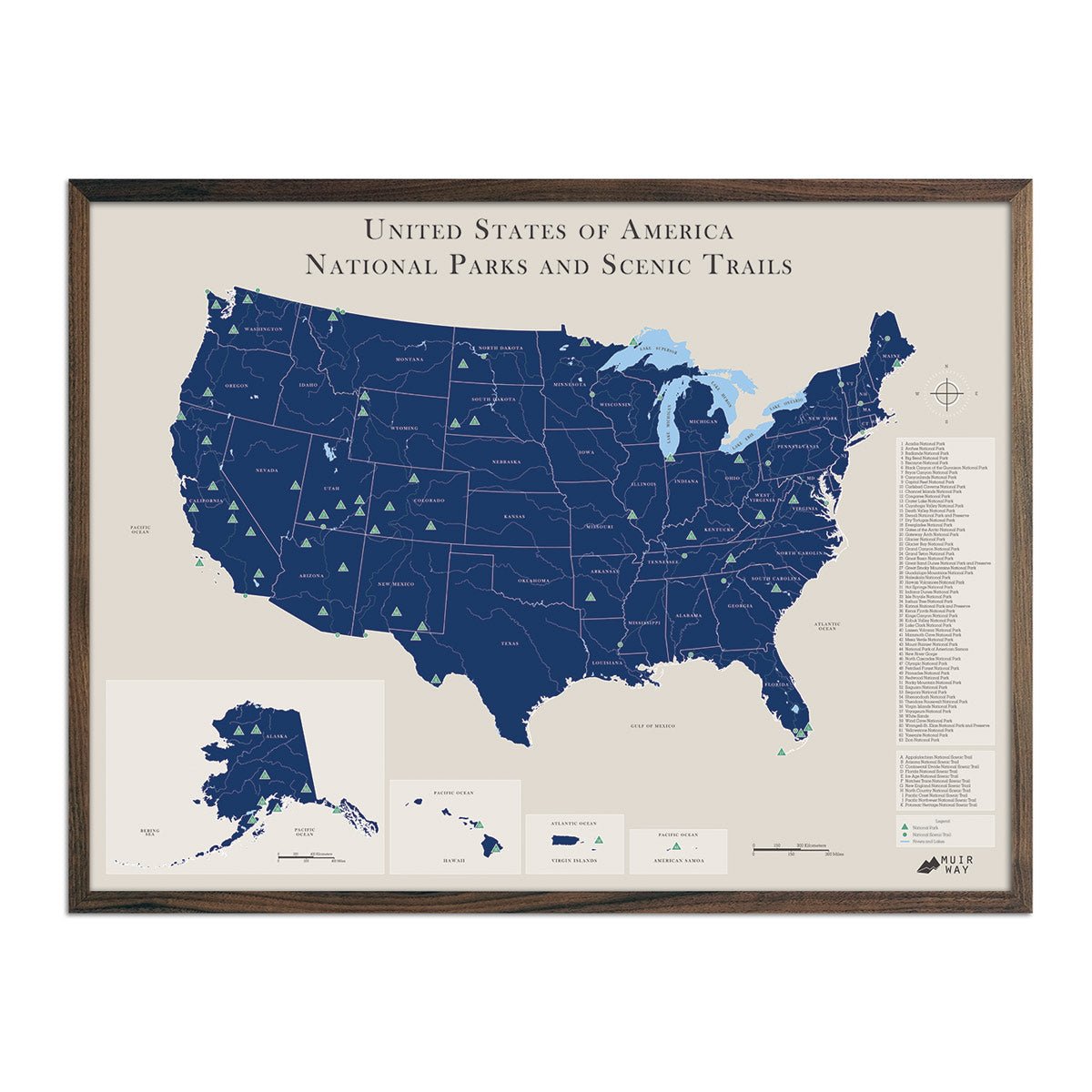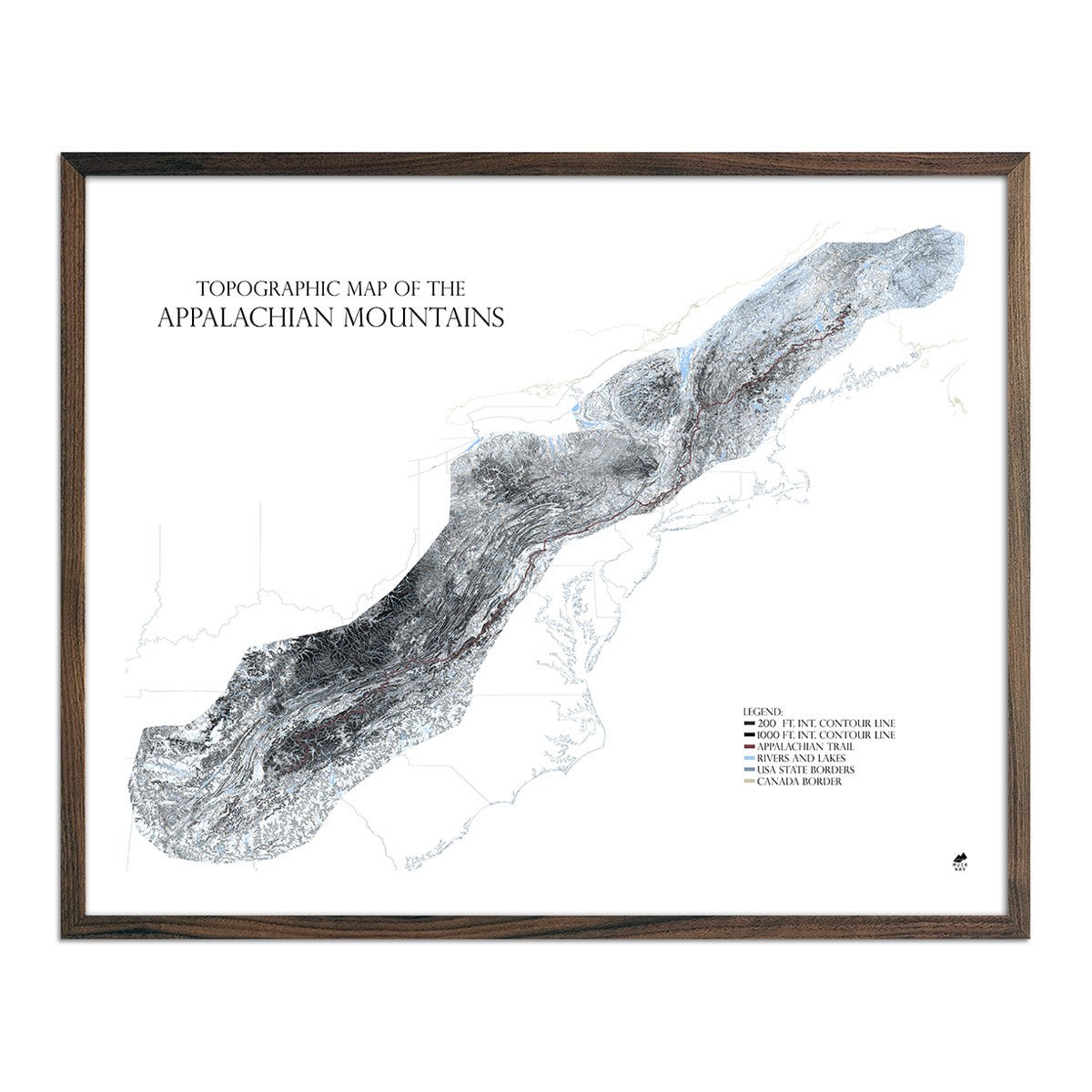The United States is home to an incredible system of regional and national parks, many of which contain impressive freshwater lakes.
Millions of plants, animals, and even humans depend on these lakes, making them some of the most valuable natural resources in the world. Let’s talk about the largest lakes in the US, diving into some of the details that help them stand out from smaller bodies of water.
How many lakes are in the United States?
First, it’s good to put things into perspective – the US truly does have an insane number of freshwater lakes, not all of which are as massive or famous as the ones on this list. Either way, the US is a hub of stunning freshwater lake systems.
In total, it’s estimated that the US has over 3 million natural freshwater lakes. This seems like an absurd number, and it kind of is. For comparison, Russia – the largest country on earth – only has around 2.8 million lakes, many of which are very small. The really interesting thing about lakes in the US, however, is that the state of Alaska alone is home to a majority of them.
Alaska is thought to contain nearly 3 million lakes itself, although only around 3,000 are actually named. This is due to the seasonal nature of most Alaskan lakes, with many of them only present when winter glacier melt fills remote basins. In terms of the rest of the US, the lower 48 states contain around 480,000 freshwater lakes – a small number compared to the bragging rights of the northernmost US state.
What state in the US has the best lakes?
The “best” kind of lake is subjective, of course. But the US is also home to the Great Lakes, a series of five interconnected natural wonders that also happens to contain the largest lake in the world – these lakes are often considered the crème de la crème of freshwater tourism, and one state in particular has borders touching four out of five.
Michigan’s state borders manage to give tourists and native residents access to four of the Great Lakes: Lake Superior, Lake Michigan, Lake Huron, and Lake Erie. For this reason, Michigan is considered by many to be the state with the best lakes, with millions of tourists flocking to the locale each year to enjoy a bit of fun by the water.
Are all five Great Lakes in the US?
All five of the Great Lakes are in the US, stretching across a massive distance and sharing many similar properties to form an incredibly unique freshwater system straddling North American borders. Lake Superior, Lake Huron, Lake Ontario, and Lake Erie share shorelines between the US and Canada. The last lake, Lake Michigan, lies within the border of the United States only.
What is the cleanest lake in the USA?
Water cleanliness is an important part of providing freshwater for drinking, industry, and tourism. Many of the lakes within the US are clean – at least compared to the overall state of lakes around the world.
The Environmental Protection Agency’s (EPA) 2017 National Lakes Assessment did reveal a number of concerning data with regards to how clean our freshwater lakes truly are. Here are a few tidbits from these findings:
-
Nearly 50% of lakes in the US are in poor condition, with elevated levels of phosphorus and nitrogen present
-
Around 25% of lakes are home to excessive amounts of nutrients, often caused by agricultural runoff
-
In terms of lakeshore conditions, only 25% of lakes were found to have pristine shorelines free of human alterations
Not the best news – and these are problems that are becoming more difficult to deal with over time as climate change transforms our planet’s landscape, making clean freshwater harder to come by each year.
With that being said, it’s not really possible to nail down an exact lake to crown a winner, when it comes to cleanliness. While you may find a few lists out there that claim specific lakes to be the “cleanest” – in reality, there haven’t really been very many comprehensive, up to date surveys covering all freshwater lakes in the US aside from smaller, industry specific studies. On top of that, many micro-pollutants are nearly impossible to track or measure properly on such a grand scale.
What is the prettiest lake in the US?
Beauty is in the eye of the beholder – and in our eyes, the most stunning lake in the US would have to be Lake Tahoe, located between California and Nevada. If you haven’t seen this lake in person, you’re in for a good time when you find the time to visit.
Formed through a combination of glaciation and volcanic activity millions of years ago, Lake Tahoe is now enjoyed by over 10 million visitors per year, and for good reason. Crystal clear waters along its shoreline, picturesque mountains looming above its borders on all sides – Lake Tahoe is a dream come true for outdoor enthusiasts. The other incredible feature of this lake is its ability to transform with each passing season, with colors fading and emerging throughout the year.
Located over 6,000 feet above sea level, Lake Tahoe is also a popular winter sports destination for athletes and amateurs from around the world. During the winter, the surrounding mountaintops and evergreen Jeffrey pine trees are transformed into a winter wonderland – and just months later, a cozy and snow-free landscape emerges for those who want to explore hiking trails.
What are the 10 biggest lakes in the United States?
Now, let's dive into the largest lakes located in the US, ranked by size. We’ll be going over what features these lakes have as well, and talking a bit about what kind of fun things you may discover while visiting them.
1. The Great Lakes

Size: 94,250 square miles
Swimmable: Yes
The Great Lakes are actually a series of five different lakes, often grouped together due to their interconnected nature, forming the largest freshwater lake system in the world. Not only are the five lakes incredibly important economically, they’re also home to a diverse range of plant and animal species, some of which are only found along their shores. The names of the individual lakes include:
-
Lake Superior, the largest freshwater lake in the western hemisphere
-
Lake Huron, the second largest lake
-
Lake Michigan, the third largest lake
-
Lake Erie, the fourth largest lake
-
Lake Ontario, the fifth largest lake
These lakes are so large, some of them experience their own weather patterns and span further than the human eye can see, in terms of shoreline. While technically separate from one another, The Great Lakes combined form a singular hydrological system connecting the region with the Atlantic Ocean to the east. In terms of depth, Lake Superior is the deepest lake on our list.
Formed by ice age glaciers millions of years ago, the Great Lakes are considered to be some of the most impressive geographic marvels on our planet – attracting millions of visitors per year and serving as important scientific research hubs.
2. Lake of the Woods

Size: 1,679 square miles
Swimmable: Yes
Stretching between the Canadian provinces of Ontario and Manitoba into the US state of Minnesota, the Lake of the Woods is a truly massive freshwater lake. With around 14,000 known islands, this lake is one of the most popular camping and outdoor destinations for water enthusiasts looking for the next big thing.
Similar to some of the Great Lakes, the Lake of the Woods is a popular location for fossil-hunting pros and amateurs alike, with a number of unique minerals hidden within its sandy shores. Due to its northerly location, this lake is home to a surprisingly biodiverse range of plant and animal species. While visiting you may spot:
-
Fish including walleye, yellow perch, largemouth bass, and many more
-
Birds ranging from bald eagles to American white pelicans
-
Large mammals such as moose, black bears, and cougars
In 2019, Lake of the Woods was chosen as the location for the World Ploughing Contest – yes, there is indeed an international organization that champions whoever can plough a field the best with a tractor.
3. Iliamna Lake

Size: 1,012 square miles
Swimmable: Yes
As Alaska’s largest lake, Iliamna Lake is nestled within mountain ranges in the upper part of the state’s peninsula. One of the most striking features of this lake is the currently active Iliamna Volcano, located just north – the last volcanic eruption is estimated to have been before Europeans began exploring Alaska.
Because of its location, this large lake is home to a number of highly sought after fish species like sockeye salmon, chinook salmon, and steelhead trout. Not only that, but Iliamna Lake is also home to a unique population of freshwater seals. Harbor seals are known to live in water with low salt content compared to other species, but the Iliamna Lake seals make up one of two total groups of freshwater harbor seal populations in the entire world.
4. Great Salt Lake

Size: 950 square miles
Swimmable: Not recommended
Like its name implies, the Great Salt Lake is an incredibly large saltwater lake located in Utah, right next to Salt Lake City. Due to the salt content of the water present here, most people choose not to swim in it – but that doesn’t mean it’s void of life. Like most lakes, a diverse assortment of marine life calls this lake home. While not every classic American animal thrives here, you may come across:
-
Brine shrimp, a type of crustacean commonly found in saltwater lakes
-
Brine flies, a tiny species of fly that that even survive in pools of crude petroleum
-
Hundreds of bird species, many of which migrate great distances to nest and feed
Unfortunately, the Great Salt Lake has shrunk by over 50% since the 1980’s – this is mainly because many sources of freshwater that previously fed this massive saltwater lake are drying up due to climate change and agricultural demand. Because of this, scientists are now warning of an impending disaster: poisonous dust clouds.
As the lake shrinks, the exposed and barren lakebed left behind is assailed by winds, stirring up immense clouds of dust. This dust not only contains sand and dirt – there are also other pollutants like pesticides, lead, and mercury among others; all of which pose a serious health risk to nearby inhabitants as climate change unfolds around us.
5. Lake Oahe

Size: 685 square miles
Swimmable: Yes
Stretching between South Dakota and North Dakota, Lake Oahe is the largest man-made lake in the United States by surface area, serving as a reservoir behind the Oahe Dam along the Missouri River. Lake Oahe has one of the most unique coastlines, as it’s surrounded by the incredibly beautiful prairie ecosystems of the Dakotas instead of mountains and trees like most lakes on the list.
This body of water is a popular destination for fans of boating, water skiing, tubing, and fishing. While some species of fish – such as chinook salmon – have to be added to the lake artificially, many other species are found here naturally, transported by the massive Missouri River.
The main purpose of Oahe Dam, aside from the recreational industries present at the lake, is to serve as a flood prevention method for cities and agricultural hubs located further downstream.
6. Lake Okeechobee

Size: 662 square miles
Swimmable: No
Down south, Lake Okeechobee claims the title of the largest freshwater lake in Florida. The actual volume of the lake changes often, with spillways and dikes releasing or adding water throughout the year depending on flood risks.
Similar to the Everglades, this lake is home to a number of important aquatic species of plants and animals, with a particularly high number of native fish present. These fish play a vital role in the lake’s ecosystem, providing birds and other animals with an ample, year-round food supply. While visiting the lake, you may be able to spot some truly beautiful species such as:
-
White ibis, a type of wading bird with a stunning white plumage and red beaks and legs
-
Snowy egrets, a tiny species of white feathered heron with sun-yellow eyes
-
Tricolored herons, a slim, elegant species of heron with blue, white, and orange tones
One of the most pressing environmental issues plaguing Lake Okeechobee is the high levels of excess nutrients present, which arrive at the lake via industrial and agricultural runoff. In Florida, the land surrounding Lake Okeechobee is home to now-polluted watersheds – although work is being done to correct this as the water is needed by nearby cities and serves as an important source of water for the Everglades.
7. Lake Pontchartrain

Size: 631 square miles
Swimmable: Not recommended
Lake Pontchartrain, named after Louis Phélypeaux – a French politician who served during the reign of Louis XIV – is a brackish water lake within Louisiana. As an estuary, this lake holds an incredible volume of freshwater mixed with seawater, resulting in a body of water that’s salty but isn’t as harsh as the ocean.
The lake receives freshwater from around five different US rivers, and spills out into the Gulf of Mexico. This area is home to a handful of biodiverse ecosystems including marshes and swamps – preferred by bird species like pelicans who often migrate to and from estuaries. However, the most interesting thing about this lake’s animal life is the presence of species like bull sharks and blacktip sharks, both of which thrive in brackish waters.
While plenty of boating and fishing lodges line the shores, it’s not actually recommended by most nearby residents to swim in the lake itself. Decades of poor lake management have led to a few issues with swimming there: once-pristine beaches littered with hazards like glass and trash, water pollution from sewage and chemical runoff, and a dangerous undertow near the lake’s dikes.
8. Lake Sakakawea

Size: 520 square miles
Swimmable: Yes
Just like Lake Oahe, Lake Sakakawea is a man-made reservoir, created via the Garrison Dam in 1953 by the U.S. Army Corps of Engineers – which is the US Army’s engineer section which has historically managed mapping and massive infrastructure projects within the US like dams and reservoirs.
The Garrison Dam produces around 2 billion kilowatt-hours of electricity yearly, used for residential and industrial purposes in the surrounding states. Aside from generating power, the lake is also a popular weekend getaway spot for outdoor enthusiasts, although the fishing here is less impressive than other lakes on this list.
If you’re in the area and enjoy aquariums, you may want to stop by the Garrison Dam National Hatchery and Aquarium, a section of the dam devoted to researching, releasing, and displaying a variety of North Dakota’s native fish species.
9. Lake Champlain

Size: 490 square miles
Swimmable: Yes
The Canadian-American body of water known as Lake Champlain stretches between New York, Vermont, and Quebec – connecting the two nations via this beautiful freshwater paradise. Lake Champlain has an interesting shape, with its thin snake-like body of water nestled between hydrological borders, a treat for visitors and cartographers alike.
The hydrology of Lake Champlain is complex, with dozens of rivers and creeks feeding or draining out of the basin, giving hundreds of thousands of residents from neighboring cities access to drinking water. Vermont as a state is known for its often rigorous and effective environmental policies, and has led the charge to clean up and maintain the health of Lake Champlain starting in the late 1990’s.
Considered the premier bass-fishing lake of the region, Lake Champlain’s diverse ecosystem also benefits from the environmental protections in place. Hundreds of bird, fish, and other animal species call this lake home, and the water itself is highly swimmable and a popular travel destination during the warmer months.
10. Becharof Lake

Size: 453 square miles
Swimmable: Yes
Becharof Lake is Alaska's second largest freshwater lake – less than half the size of Lake Iliamna. Don’t let this island-dotted lake’s small stature fool you, however, as it’s one of the most important sanctuaries for a handful of wild salmon species.
Brown bears, bald eagles, and other iconic North American species depend on these salmon to nurture their young, and call this lake their home throughout much of the year. Historically, many different groups of native people have lived along the lake’s shores, with ancient fishing village remains still being discovered within the Becharof National Wildlife Refuge to this day.
As of 2020, the largest and closest city of Egegik reported a population of only 39 – making Becharof Lake one of the most remote lakes on our list.
Final thoughts
The US isn’t the only nation with massive freshwater lakes, but it is home to some of the biggest, without a doubt; and with climate change on our doorstep, it’s more important now than ever to come together and work towards protecting these natural wonders. If you’re curious about related topics, such as the hydrological mapping of our diverse world, make sure to check out some of our other related content.
Inspired by America’s grand lakes and the stories they tell? Explore our curated collection of vintage fish prints—where every design channels the timeless essence of aquatic life and the art of discovery.























































